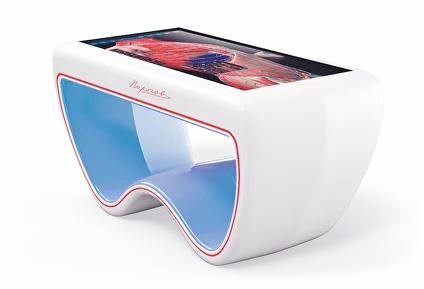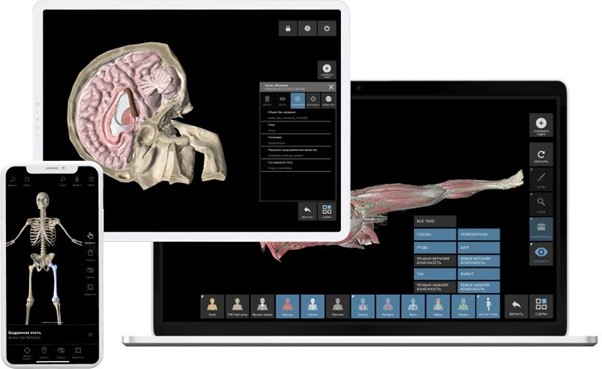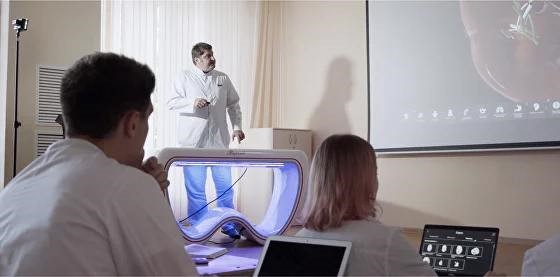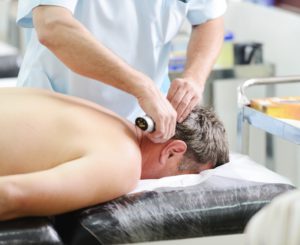Modern technologies are transforming the way education is delivered across various fields, particularly in medicine. One such innovative tool is the virtual dissection table, which enables students and professionals to study human anatomy in an interactive environment. This technology has been adopted in numerous countries, each with its unique approaches and experiences. In Russia, a prominent example of this technology is the Pirogov Interactive anatomy table . This article explores the global usage of virtual dissection tables, highlighting key differences in approaches across countries and focusing on the Pirogov Table as a case study of Russian innovation in medical education.
Global Usage of Virtual Dissection Tables
The United States
The United States is a leader in the use of virtual technologies in medical education. Many medical schools and universities, such as Stanford University, have integrated virtual dissection tables into their curricula. In the U.S., there is a strong emphasis on integrating these tables with other digital tools, such as simulators and virtual reality programs, creating a comprehensive educational ecosystem. This holistic approach enhances the learning experience by combining anatomical studies with practical simulations.
Europe
In Europe, virtual dissection tables are also widely used, though with some regional distinctions. Countries like Germany and the United Kingdom emphasize an interdisciplinary approach to using this technology. In Germany, for example, medical and biology departments collaborate to create joint educational programs, allowing students from various disciplines to study anatomy together. The UK focuses on making these technologies accessible not only to leading universities but also to regional educational institutions, ensuring broader access to innovative tools.
Asia
Asian countries such as Japan, South Korea, and China are actively incorporating virtual dissection tables into their educational systems. In Japan, special attention is given to the precision and detail of virtual models, reflecting the country’s high technological standards. In China, the rapid expansion of educational infrastructure has led to the inclusion of virtual dissection tables as part of a national program to modernize education. South Korea emphasizes the practical application of this technology for preparing students for real surgical procedures.
India
India, with its rapidly growing higher education system and the need for a large number of qualified medical professionals, has also begun actively integrating virtual dissection tables into its educational process. Given the shortage of traditional educational materials and anatomical specimens, virtual technologies have become a crucial resource for Indian medical schools.
Key Features in India:
Scalability and Accessibility: Indian universities and medical colleges, such as AIIMS (All India Institute of Medical Sciences) and Manipal Academy of Higher Education, use virtual tables to overcome the limitation of access to real anatomical specimens. These tables allow large numbers of students to simultaneously access anatomical data, which is particularly important in a country with a large student population.
Adaptation to Local Needs: Localized versions of virtual tables are being developed in India, considering the anatomical specifics of the Indian population. This makes the education more relevant for students who will be working with patients in this region.
Focus on Foundational Education: Virtual tables are actively used in the early years of medical education to provide fundamental knowledge of anatomy, better preparing students for more advanced practical training.
Africa
In Africa, where educational challenges such as resource scarcity and a shortage of qualified educators are prevalent, virtual dissection tables are gradually being introduced into medical schools. These technologies are becoming vital tools for expanding access to quality medical education across the continent.
Key Features in Africa:
Addressing Resource Shortages: In African countries like South Africa, Kenya, and Nigeria, virtual dissection tables are used to compensate for the lack of anatomical specimens and equipment. This is particularly relevant for educational institutions in remote or under-resourced regions.
International Partnerships: Many African medical schools collaborate with international organizations and charities to gain access to virtual tables. For example, healthcare development programs sponsored by the World Bank or WHO include funding for the acquisition and implementation of such technologies.
Application in Training and Practice: Virtual dissection tables are used not only for student education but also for training medical professionals in clinical settings. This enables healthcare workers to refresh their knowledge and enhance their skills, especially in environments where training opportunities are limited.
The Pirogov Interactive Anatomical Table

A prominent example of virtual dissection technology in Russia is the Pirogov Interactive Anatomical Table. This table represents a sophisticated software and hardware solution that combines high-precision anatomical models with extensive educational functionality, tailored to the specifics of Russian medical education.
Key Features of the Pirogov Table:
- Precision and Detail: The Pirogov Table allows users to explore virtual human body models with a high degree of detail. All anatomical structures are presented with maximum accuracy, enabling the study of various levels—from general views to specific organs and tissues.
- Virtual Dissection: One of the table’s key functions is the ability to perform virtual dissections. Students can “cut” the body in various planes, examine internal organs, and understand their spatial relationships, making the learning process highly interactive and visually comprehensible.
- Multimodal Display: The Pirogov Table supports different display modes, including X-rays, CT, and MRI scans. This integration allows students to connect anatomical studies with radiology and other related disciplines, providing a comprehensive learning experience.
- Educational Modules and Testing: The table includes educational modules with theoretical materials, tests, and interactive assignments. This helps students not only acquire knowledge but also assess their understanding during the learning process.
Application in Medical Education

The Pirogov Table is actively used in leading Russian medical universities, such as Sechenov University and Pavlov State Medical University. These institutions incorporate the table into their curricula for medical students, allowing them to study human anatomy more deeply and visually.
Early Specialization: The Pirogov Table helps students focus on specific medical specialties early in their education. For example, future surgeons can use the table to simulate operations, better preparing them for real-world practice.
Integration with Traditional Education: It’s important to note that the use of the virtual table does not replace traditional educational methods, such as working with anatomical specimens, but complements them. This maintains continuity in medical education while introducing modern technologies into the learning process.
Enhancing Training Quality: Through the use of the interactive table, students gain a deeper understanding of anatomical structures and their functions. This, in turn, improves the quality of training for future doctors and reduces risks in clinical practice.
An additional feature that sets the Pirogov Interactive Anatomical Table apart is its complementary mobile application, designed specifically for teachers and students. This app extends the capabilities of the table beyond the classroom, offering a flexible and accessible learning tool that can be used anytime, anywhere.
Key Features of the Mobile Application:
Seamless Integration with the Table: The mobile app is fully integrated with the Pirogov Interactive Anatomical Table, allowing users to access the same high-quality anatomical models and educational content on their mobile devices. This ensures that students can continue their studies outside of the classroom, reinforcing what they’ve learned during interactive sessions with the table.
Personalized Learning: Teachers can use the app to create personalized learning paths for their students, assigning specific modules, tests, and virtual dissections. This allows for a more tailored educational experience, meeting the individual needs of each student.
Interactive Features: The app includes interactive quizzes, 3D models, and virtual dissection tools that students can manipulate directly on their mobile devices. This interactivity enhances the learning process, making it more engaging and effective.
Resource Library: The application provides access to a vast library of educational resources, including textbooks, articles, and video tutorials. This library is regularly updated, ensuring that both students and teachers have access to the latest information and best practices in the field of anatomy.
Remote Collaboration: The mobile app facilitates remote collaboration between students and teachers. Teachers can monitor students’ progress in real time, provide feedback, and even conduct virtual classes, making it a valuable tool for distance learning.
Benefits for Education:
The anatomy app significantly enhances the utility of the Pirogov Interactive Anatomical Table by making anatomical studies more accessible and flexible. For students, it provides the opportunity to review materials and practice virtual dissections at their own pace, improving retention and understanding. For teachers, it offers a convenient way to manage and monitor student progress, even outside the classroom, making the teaching process more efficient and effective.
By combining the powerful features of the Pirogov Interactive Anatomical Table with a versatile mobile application, Russian medical education takes a significant step forward in integrating technology with traditional learning, offering a comprehensive and modern approach to studying human anatomy.
Conclusion
The Pirogov Interactive Anatomical Table exemplifies the successful integration of modern technologies into medical education. It allows students and professionals to effectively study anatomy, combining traditional teaching methods with innovative solutions. This table not only helps train highly qualified specialists but also contributes to the advancement of medical science in Russia, preserving and enhancing the legacy of Russian medicine. By examining global experiences and innovations like the Pirogov Table, educational institutions around the world can adopt and adapt best practices to improve medical training and patient care.
Modern technologies are transforming the way education is delivered across various fields, particularly in medicine. One such innovative tool is the virtual dissection table, which enables students and professionals to study human anatomy in an interactive environment. This technology has been adopted in numerous countries, each with its unique approaches and experiences. In Russia, a prominent example of this technology is the Pirogov Interactive Anatomical Table. This article explores the glob





Be First to Comment